The content of the article
More than half of the beautiful half of humanity successfully dye their hair and are satisfied with their own appearance. The beauty industry has gone far ahead, now with classic dyeing you will not surprise anyone. Over the past two years, new technologies have appeared, such as bronding, balayash, shatush, eluting, 2D and 3D coloring.
Girls and women are painted for various reasons: one wanted change, the second wants to paint over gray hair, and the third decided to conquer the man in a new way. Not all ladies visit the salon, so it is important to figure out how to dye your hair yourself.
Types of Dyes
- Natural (from natural ingredients)
- Persistent (Permanent)
- Tinting
- Semi resistant
Dyes, consisting of natural components, the most sparing. Pigments of this type include henna and basma. By and large, pigments are created not only for hair coloring, but also for their healing. Henna is able to make the hair golden, while basma gives a touch of eggplant color.
If there is a need for a radical change in color or shading of gray hair, it is worth resorting to persistent dyes. Paints of this type are characterized by an excessively aggressive composition, as a result of which they greatly spoil the hair. Persistent dyes give the best result in terms of staining, but they have a bad effect on the scalp.
Tinting preparations are used in cases where you need to slightly change the shade or to correct the result of staining with persistent pigments. The components that make up the composition do not affect the structure of the hair, therefore they are harmless. Tinting dyes last on average about two weeks, then the color dims with each wash of the head.
Semi-resistant preparations are used for a slight change in shade. Unlike persistent pigments, this type of dye is more gentle, therefore, it keeps less. If you are the type of woman who dyes her hair several times a month, dyeing with these pigments is suitable for you. Semi-resistant paints have an accumulation function, pigments are trapped in the hair shaft, as a result of which each subsequent coloring preserves the color much better.
Essential tools for dyeing hair at home
- Means for removing dyes from the skin (and surfaces, if necessary)
- Hair clips
- Rubber or plastic gloves (often come with paint)
- Cotton pads
- Brush or sponge
- Container for mixing components
General staining rules
- Comb your hair thoroughly with a massage brush and then divide it into 4 equal parts. This can be done using a flat comb as follows: draw a line from one ear to the other, then another from the middle of the forehead to the back of the head. As a result of simple manipulations, it turned out exactly what is required. Clamp each lock individually with clips, freeing them as you paint.
- In the container that you prepared in advance, mix the oxidizing agent and dye. Bring the mixture to a homogeneous mass using a brush. Be sure to wear gloves, regardless of the type of dye chosen.
- Use a sponge or brush to apply pigment along the parting lines (from ear to ear, from the middle of the forehead to the back of the head).
- Choose one of the occipital areas for staining, remove the hair clip and proceed to the procedure.Separate a thin strand diagonally, apply paint from the roots and lower by 3-5 cm. Repeat the steps with the entire staining area, working through each row in turn.
- If you want to dye your hair along the entire length, then also separate the strands, put them on your hand and brush them from the roots to the ends. Full-length hair is dyed only after processing the root zone.
- Wait for the necessary time for the pigment to absorb. As a rule, for light tones - 35 minutes, for dark - 45 minutes.
- Wash off the paint with plenty of water, paying particular attention to the temples and the area behind the ears. Wash your hair with shampoo several times so that there is no trace of dye on the towel, then use balm.
- Wipe the paint off the skin with a cotton pad and pigment remover. Allow your hair to dry naturally.
Features of the use of resistant and semi-resistant dyes
The pigments of these drugs are divided into ammonia-free and ammonia. The former are considered light, sparing in relation to the structure of the hair. The second, on the contrary, are aggressive and tough, but more persistent.
If you prefer ammonia cream paint, it is recommended that you do not wash your hair for several days before the procedure. Of course, it all depends on the type of hair, but the "fat" of the hair will create a protective film, which is so necessary when staining with permanent pigments.
Ammonia-free, on the contrary, are applied to clean hair. The components included in the composition have the same properties as their aggressive relatives, but semi-resistant paints can lie unevenly, as a result of which they will have to be repainted.
Features of the use of tinting paints
The composition of tonics contains a small percentage of oxidizing agent, as a result of which dyes carefully affect the hairline. Scope - a slight color change, shading gray hair, the fight against an undesirable shade in blondes (green, yellow, purple, red).
As for the staining method, you need to work here quickly. The pigment sets well, so it is undesirable to stretch the application time. Application strictly according to the instructions, the exposure time ranges from 15-25 minutes.
When staining gray roots, the hair acquires a beautiful discreet shade, but the grayness does not completely disappear.
When toning dark curls, the color turns out to be deeper and more expressive, shine appears, and the hair structure thickens.
An undesirable shade is removed by the blondes if the previous staining with persistent drugs was incorrect. At home, this procedure is extremely difficult to carry out, since knowledge of coloristics is required. Therefore, it is recommended to contact professional masters who will correct the situation.
Features of hair dyeing with natural dyes
Basma and henna are natural preparations containing natural ingredients. Young girls who are still too early (according to parents) to dye their hair often use paints of this kind. Women who prefer organic food also use henna and basma.
The result of staining directly depends on the original hair color. Natural dye lays well on brown hair, while on dark the effect will be invisible. This type of coloring is not suitable for blondes, since the final shade can greatly surprise its owner.
After applying the pigment, the exposure time is an average of 50 minutes. Basma and henna have a beneficial effect on the hair, so many ladies walk with paint on their heads for an hour or even two, which is absolutely harmless. Bulbs harden, dandruff disappears, hair shines!
An important feature of natural dyes is that they exclude subsequent staining with other pigments. That is, if the wrong color is obtained, you cannot correct the omission with persistent or tinting drugs.
Basma and henna are powder pigments, bred with hot (!) Water. Several bags are mixed in the container, after which it is steamed with boiling water. To bring the mixture to a homogeneous mass, a paint brush will help. Next, the paint cools and is applied to the hair in the usual manner described previously.
The difficulty lies in the uneven and time-consuming application due to the thick consistency, so it takes longer to work out each strand. Pigments are washed off with plenty of cool water.
Now you know how to dye your hair at home, so this procedure will not be difficult. It is important to carefully read the instructions that came with the paint to avoid deterioration of the hair structure or peeling of the scalp. Watch the exposure time, you do not need to increase or decrease it. Use dye remover and do not neglect natural drying. When choosing a shade, focus on your native color for the first time, you should not immediately dye a brunette from a brunette. You will succeed, go for it!
Video: how to make colored ombre hair

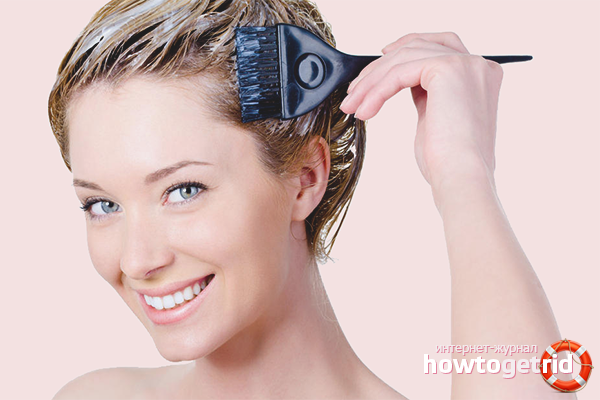
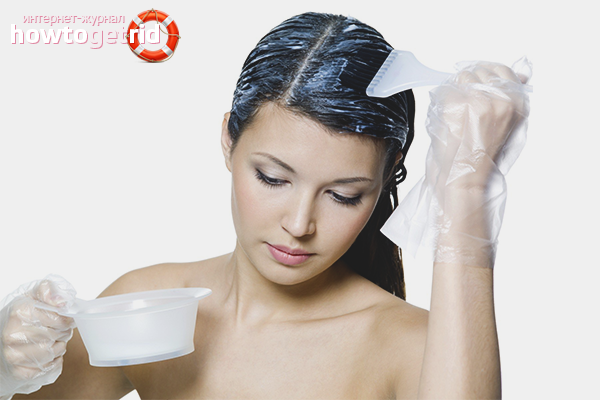
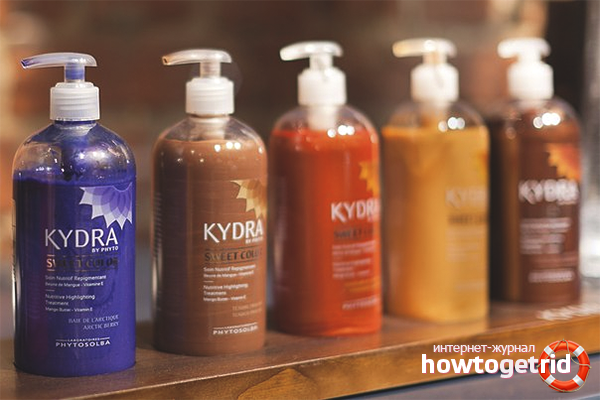




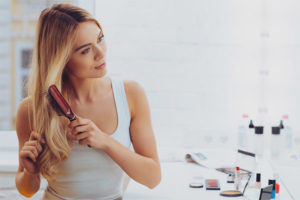
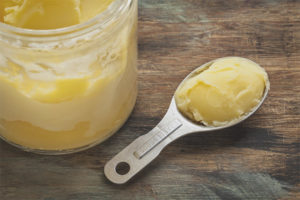
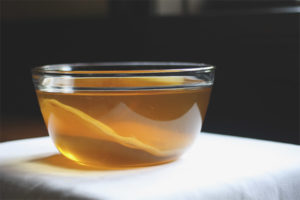
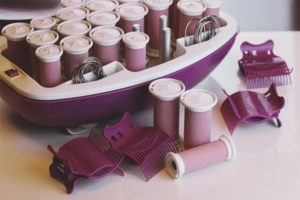
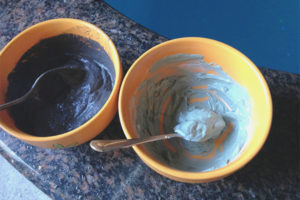
Submit